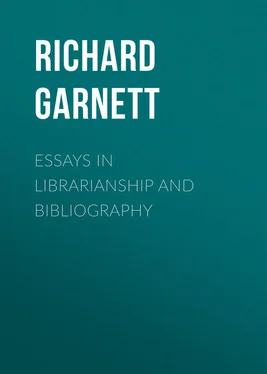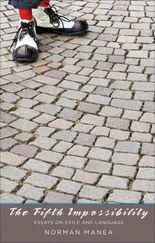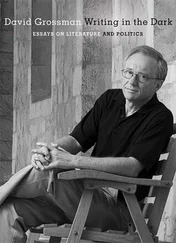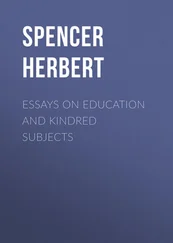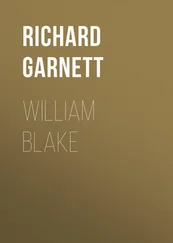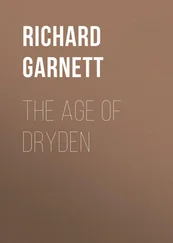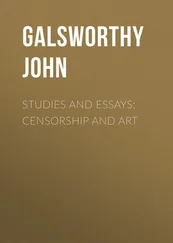Richard Garnett - Essays in Librarianship and Bibliography
Здесь есть возможность читать онлайн «Richard Garnett - Essays in Librarianship and Bibliography» — ознакомительный отрывок электронной книги совершенно бесплатно, а после прочтения отрывка купить полную версию. В некоторых случаях можно слушать аудио, скачать через торрент в формате fb2 и присутствует краткое содержание. Жанр: foreign_antique, foreign_prose, на английском языке. Описание произведения, (предисловие) а так же отзывы посетителей доступны на портале библиотеки ЛибКат.
- Название:Essays in Librarianship and Bibliography
- Автор:
- Жанр:
- Год:неизвестен
- ISBN:нет данных
- Рейтинг книги:4 / 5. Голосов: 1
-
Избранное:Добавить в избранное
- Отзывы:
-
Ваша оценка:
- 80
- 1
- 2
- 3
- 4
- 5
Essays in Librarianship and Bibliography: краткое содержание, описание и аннотация
Предлагаем к чтению аннотацию, описание, краткое содержание или предисловие (зависит от того, что написал сам автор книги «Essays in Librarianship and Bibliography»). Если вы не нашли необходимую информацию о книге — напишите в комментариях, мы постараемся отыскать её.
Essays in Librarianship and Bibliography — читать онлайн ознакомительный отрывок
Ниже представлен текст книги, разбитый по страницам. Система сохранения места последней прочитанной страницы, позволяет с удобством читать онлайн бесплатно книгу «Essays in Librarianship and Bibliography», без необходимости каждый раз заново искать на чём Вы остановились. Поставьте закладку, и сможете в любой момент перейти на страницу, на которой закончили чтение.
Интервал:
Закладка:
Richard Garnett
Essays in Librarianship and Bibliography
PREFACE
The essays collected in this volume are for the most part occasional and desultory, produced in compliance with requests of friends, or the appeals of editors of bibliographical journals or organisers of library congresses, to meet some special emergency, and treating of whatever appropriate matter came readiest to hand. The most important of them, however, though composed at considerable intervals, and devoid of any conscious relation to each other, are yet united by the presence of a pervading idea, which may be defined as the importance of scientific processes as auxiliaries to library management.
It seems almost preposterous to speak of typography as a scientific process, yet such it is in its relation to the graphic art which it superseded as an agent in the production of books. It would be the merest surplusage to advocate the application of printing to any class of manuscript books but one; and that, strangely enough, is the book of books, the catalogue. When it is considered how few of the great libraries of Europe have as yet managed to get their catalogues printed, and in how many the introduction of print is as yet resisted, or beset with impediments hitherto insurmountable, it is clear that the benefits of printing may even now be set forth with profit. Fortunately, however, the question is but historical as regards the only library of which the present writer can presume to speak. Typography has now reigned at the British Museum for nearly twenty years, and any discussion of its advantages or disadvantages contained in the following essays may be regarded as out of date. It is hoped, nevertheless, that the historical interest attaching to the subject may excuse the reproduction of these papers. "Public Libraries and their Catalogues" (1879) depicts the hesitations of a transition period when the subject was in the air, but when the precise manner in which the introduction of print would take place was as yet uncertain. "The Printing of the British Museum Catalogue" (1882) describes the results of nearly two years of actual work; and "The Past, Present, and Future of the British Museum Catalogue" (1888) reviews the entire subject, both historically and with a view to the eventual republication of the catalogue. A fourth paper, contributed to the American Library Conference of 1885, has been withheld, to minimise the repetition which may be justly alleged as a defect in the essays now reprinted. The indulgent reader will consider that it was impossible to travel repeatedly over the same ground without frequent recurrence to the same facts and arguments: and it has been thought better to tolerate an admitted literary blemish than to run any risk of impairing the documentary value of the articles. If the writer had once begun to alter, he might have been tempted to alter much. Readers of the present day may feel surprise at the tentative character of some portions of the first essay in order of date, and at what seems almost a discouragement of the idea of a complete printed catalogue. The principal reason was the moderate expectation then entertained of any substantial help from the Treasury. As a matter of fact, the annual grant bestowed in the first instance would have kept the catalogue forty years at press; and, had a strictly alphabetical order of publication been adopted, it would after some years have been pointed out with derision that the great British Museum Catalogue was still in its A B C. The writer, therefore, exerted what influence he possessed to keep the idea of a complete printed catalogue in the background, and to enforce that of the publication of single articles complete in themselves which would be valuable as special bibliographies. A mere fragment of letter A, it was manifest, could be of little use beyond the walls of the Museum, but a separate issue of the article Aristotle might have great worth. The situation was entirely altered when the Treasury so increased their grant as to afford a reasonable prospect of finishing the catalogue in twenty years instead of forty. The fragmentary system of publication was thereupon quietly dropped, and printing went on in steady alphabetical sequence. It is due to the Treasury to state that, since this augmentation of the grant, their treatment of this branch of the Museum service has been uniformly liberal. It is to be hoped that this bountiful spirit will not expire with the completion of the catalogue, but will find expression in a reprint incorporating all the accessions which have grown up while it has been at press, as proposed in a very able article in the Quarterly Review for October 1898.
After the application of print to the catalogue, mechanical process has rendered no such service to the British Museum Library as the introduction of the sliding-press, the subject of another essay. While, however, printing was the result of half a century of incessant controversy, the sliding-press seemed to fall from the clouds. Its introduction was a coup d'état ; five minutes sufficed to convince the Principal Librarian of the soundness of the idea, and the thing was virtually done. No more striking contrast can be conceived than that between the condition of the Library the day before this feasibility was demonstrated, oppressed by the apparently insoluble problem how to find room for its books, and the condition of the Library the day after solution, suddenly endowed with a practically indefinite capacity for expansion, save only in the department of newspapers. No one unacquainted with the internal economy of the Museum will fully appreciate the saving of public money, to say no more, effected by this simple contrivance.
Print and the sliding-press are now, along with the electric light, undisputed possessions of the Museum; but telegraphy and photography, the two other applications of scientific ingenuity recommended in this volume, have not yet been enlisted in her service. When the printing telegraph obtains a footing, ample occupation will be found for it. Its most useful as well as most striking application, however, will probably always be the one principally dwelt upon here, the enabling every demand for a book made in the reading-room to be simultaneously registered in the Library, thus abolishing at a stroke the vexatious delays that now intervene between the writing of a ticket and its delivery in the proper quarter. The advantage alike to the public and to the staff is so obvious that the only question ought to be as to the applicability of electrical power to the transmission of legible messages under the special circumstances, which an intelligent course of experiments would speedily determine.
If telegraphy has been neglected, the same cannot be said of photography. The most perfect unanimity exists within and outside the Museum with respect to the benefit which the adoption of photography as a department of the regular work of the institution would confer alike upon it and upon the public. Nevertheless, not a single step has been taken since the writer brought the subject forward in 1884, preceded as this had been by the successful introduction of photography at the Bodleian Library in connection with the Oxford University Press. Government seems unable to perceive the public benefit to be derived from the cheap reproduction and unlimited multiplication with infallible accuracy of historical documents and current official papers; and although the Museum has of late successfully resorted to photography for its own publications, this has necessarily involved the employment of a professional photographer, whose charges are an insuperable impediment to any considerable extension of the system. It cannot be too emphatically reiterated that the question is entirely one of expense. So long as the photographer is a private tradesman he must of necessity be paid by his customers, and for any extensive undertaking must inevitably charge prices embarrassing to public institutions and prohibitive to private individuals.
Читать дальшеИнтервал:
Закладка:
Похожие книги на «Essays in Librarianship and Bibliography»
Представляем Вашему вниманию похожие книги на «Essays in Librarianship and Bibliography» списком для выбора. Мы отобрали схожую по названию и смыслу литературу в надежде предоставить читателям больше вариантов отыскать новые, интересные, ещё непрочитанные произведения.
Обсуждение, отзывы о книге «Essays in Librarianship and Bibliography» и просто собственные мнения читателей. Оставьте ваши комментарии, напишите, что Вы думаете о произведении, его смысле или главных героях. Укажите что конкретно понравилось, а что нет, и почему Вы так считаете.
